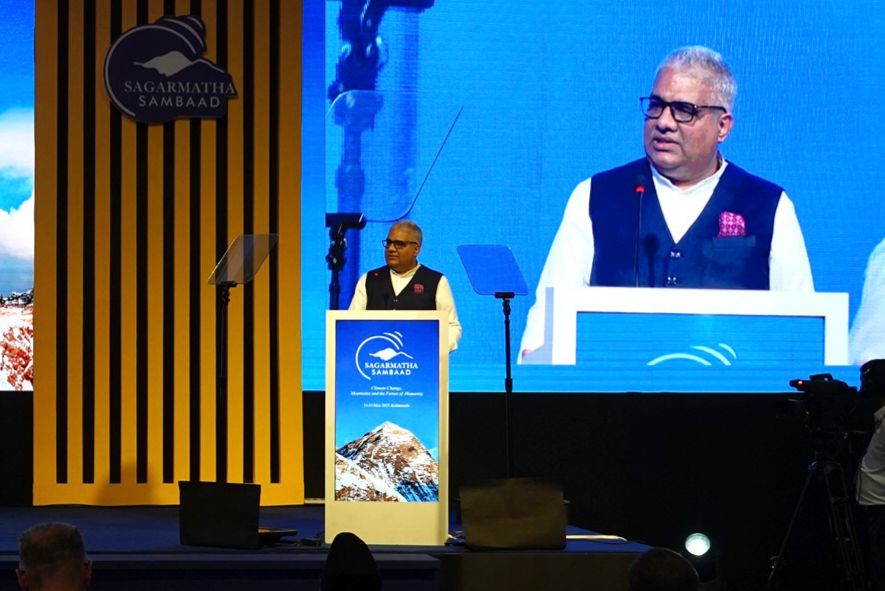India’s Himalayan Resolve: Minister Bhupender Yadav Echoes Urgency for Climate Action at Sagarmatha Sambaad in Nepal

Kathmandu — As the chill of the Himalayas settled over Kathmandu, a warm voice from the south rose with conviction. Indian Environment Minister Bhupender Yadav, addressing the opening session of Nepal’s prestigious Sagarmatha Sambaad, offered not just a diplomatic gesture, but a heartfelt commitment on behalf of a nation whose fate is deeply entwined with the mountains.
“The Himalayas bear a significant part of the burden of the environmental crisis,” Yadav said, standing before an audience of global climate thinkers, activists, and policymakers. “We in India, with our significant Himalayan territory, witness these impacts first-hand. India shares the concerns of the mountain States and their people. Our environmental futures are intrinsically linked.”
This was not just protocol. It was personal.
Minister Yadav’s presence in Kathmandu, and his articulate address, reflect India’s growing sensitivity to the environmental anguish of the Himalayas — a region that nurtures life for over a billion people, yet now trembles under the weight of climate disruption. In an era of rising global temperatures, melting glaciers, and displaced communities, India’s tone at this summit was clear: we may not have caused this crisis, but we will not walk away from it.
Under Prime Minister Narendra Modi’s leadership, India has increasingly placed climate change at the center of its international commitments. From championing the International Solar Alliance to setting ambitious net-zero targets, Modi’s administration has consistently pushed for “climate justice” — a concept that recognizes the disproportionate burdens faced by the Global South.
Yadav echoed this ethos in Kathmandu: “Despite our minimal role in causing the crisis, India is deeply committed to contributing to climate action with the urgency it demands.”
His visit, spanning two days, is not limited to ceremonial appearances. Yadav is expected to participate in multiple thematic discussions, offering India’s perspective on safeguarding Himalayan ecosystems, developing local solutions, and securing the futures of communities dependent on mountain resources.
The Indian Embassy in Nepal, too, amplified his message in Nepali — underscoring the cultural closeness and shared ecological destiny of the two nations. “भारतले हिमाली राज्यहरू र उनीहरूका जनताको चिन्तालाई साझा गर्दछ,” their post read. "Our environmental futures are inseparably linked."
What makes this moment particularly powerful is not just the minister’s presence — but the human dimension of his words. In an era when global climate summits can often become arenas of abstract data and delayed promises, Bhupender Yadav’s appeal reminded everyone in the room: the Himalayas are not just majestic landscapes, they are living entities — sacred, fragile, and vital.
As Sagarmatha Sambaad continues, India’s early and emphatic participation has set a collaborative tone. It reflects a shift — not only in regional diplomacy, but in recognizing that the survival of the Himalayas is a shared responsibility. And India, under Prime Minister Modi’s vision, appears more than ready to shoulder its part.
India In Nepal



![From Kathmandu to the World: How Excel Students Are Winning Big [Admission Open]](https://www.nepalaaja.com/img/70194/medium/excel-college-info-eng-nep-2342.jpg)
